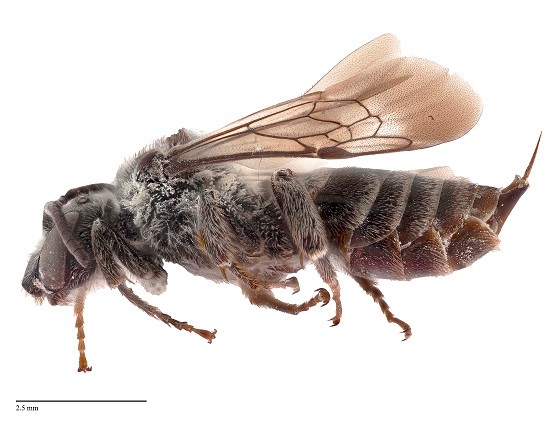ASSINIBOIA - Researchers at the Royal Saskatchewan Museum (RSM) have uncovered a specimen of a rare bee that was last found in the province more than 65 years ago.
The Macropis Cuckoo Bee specimen, Epeoloides pilosulus, was collected near Grasslands National Park, close to Wood Mountain. The rare bee is a nest parasite, or cuckoo, of oil-collecting bees of the Macropis group that is entirely dependent on the oil from a wildflower known as Fringed Loosestrife, or Lysimachia ciliata.
"The Royal Saskatchewan Museum is well known as a world-class museum and research institution," Parks, Culture and Sport Minister Laura Ross said. "This is a very significant discovery and is another example of the excellent work 小蓝视频 done by the RSM's research staff."
Records of this bee species in Canada are few. Most are pre-1960s from Manitoba, Ontario and Quebec. In the last 13 years, Alberta, Manitoba and New Brunswick have also recorded the species.
In Saskatchewan, it has previously only been collected from two locations: Wood Mountain, in 1955, and Wallwort, in 1942.
The species has been assessed by the Committee on the Status of Endangered Wildlife in Canada, or COSEWIC, as a Species of Concern and considered Endangered in Canada. It was once thought to be extinct in Canada until it was rediscovered in Nova Scotia in the early 2000s.
"This cuckoo is one of only two species in the Epeoloides genus in the world, and the only one occurring in the Western Hemisphere," RSM Curator of Invertebrate Zoology Dr. Cory Sheffield said. "This specimen supports that populations may still exist in the province, though it is still one of the most uncommon bees in Canada."
For Sheffield, the discovery has another significance, as he was also part of the rediscovery of the species in Nova Scotia.
RSM researchers have been looking for the species for the last few years. While they have found populations of the host bee and flowers, they had not caught the cuckoo bee.
While processing and identifying insect samples from some older collections at the RSM, researchers came across a single specimen that was collected in 2013 as part of the RSM's BioBlitz.
"For insects collected by museum researchers, it sometimes takes a long time to process and identify all that you've captured," Dr. Sheffield said. "I noticed an interesting bee that the summer students had just prepared for the collection. It was pretty exciting."
Saskatchewan is home to close to 300 different bee species, many of these are important pollinators of crops and wild plants in the province. The RSM currently has between 250,000 to 300,000 bee specimens in their collection that come from across North America.
To learn more about the Royal Saskatchewan Museum's programming and world class research, visit https://royalsaskmuseum.ca/, or their social channels @royalsaskmuseum on Facebook, Twitter, Instagram and YouTube.

